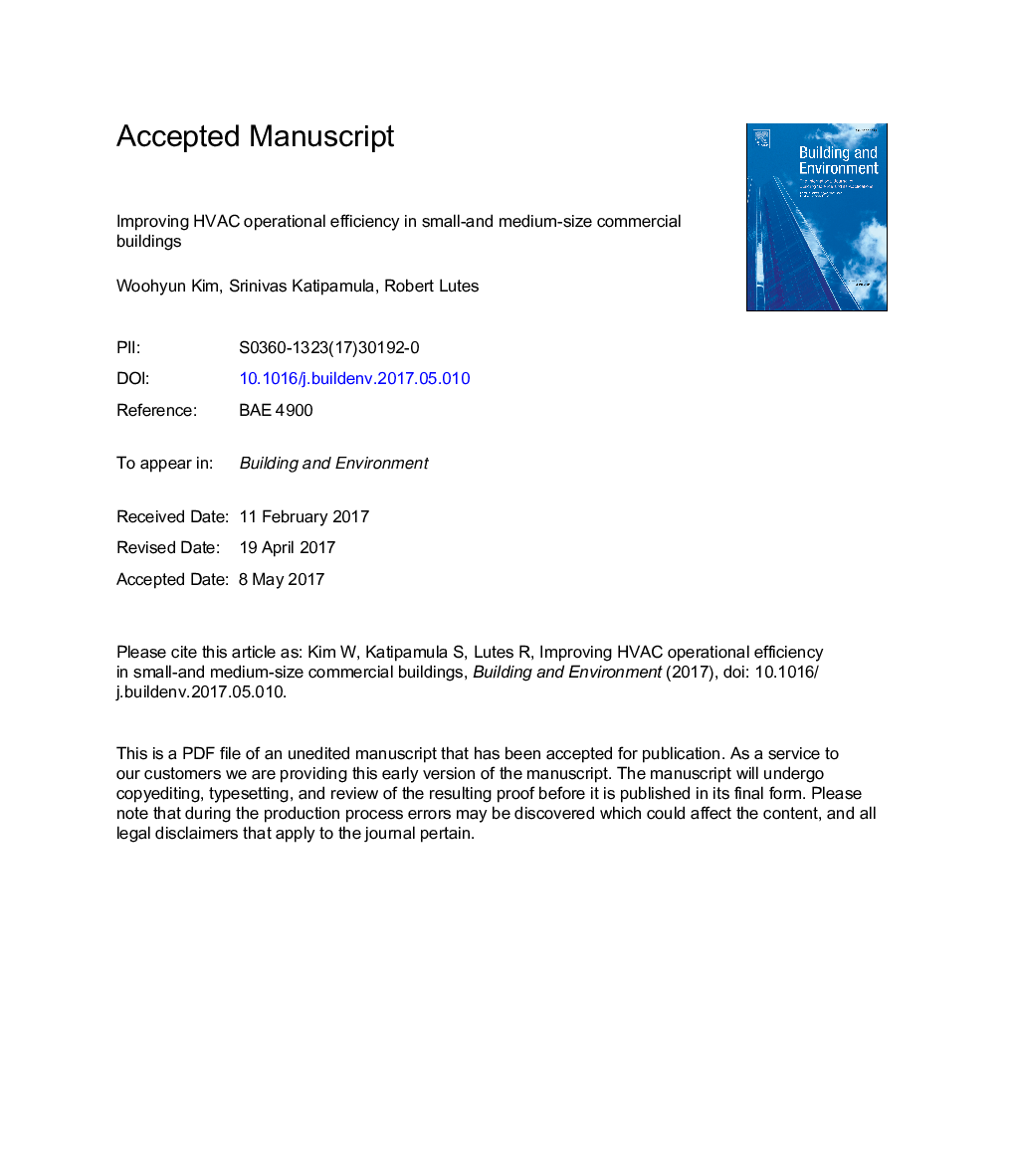| Article ID | Journal | Published Year | Pages | File Type |
|---|---|---|---|---|
| 4911489 | Building and Environment | 2017 | 41 Pages |
Abstract
Studies have shown that managing the setpoints and schedules of rooftop units (RTUs; air-conditioners and heat pumps) will result in up to 20% energy and cost savings. Another problem associated with RTUs is short cycling, i.e., when an RTU goes through ON and OFF cycles too frequently. Excessive cycling can result in decreased average efficiency (up to 10%), even if there are no physical failures in the equipment. Many small- and medium-size commercial buildings (SMBs) use rudimentary controls that are mostly manual and have limited scheduling capability and no monitoring or failure management. Therefore, many of these buildings are operated inefficiently and unnecessarily consume excess energy. SMBs typically use packaged RTUs that are controlled by individual thermostats. Ensuring the correct use of the zone setpoint and eliminating too frequent cycling of RTUs, thereby leading to persistent building operations, can significantly increase the operational efficiency of the SMBs. The work reported in this paper describes two algorithms for detecting the zone setpoint temperature and RTU cycling rate that can be deployed on low-cost infrastructure. These algorithms only require zone temperature data for detection without any additional sensor installation or supervised learning. The algorithms have been tested and validated using field data from 24 RTUs from six buildings in different climate locations. Overall, the algorithms were successful in accurately detecting the setpoints and ON/OFF cycles.
Related Topics
Physical Sciences and Engineering
Energy
Renewable Energy, Sustainability and the Environment
Authors
Woohyun Kim, Srinivas Katipamula, Robert Lutes,
